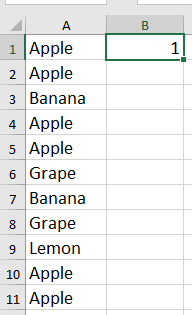
SQL Server Count Consecutive Preceding Rows based on Values. WHEN firstname LIKE LEAD(p.firstname) over (ORDER BY p.id) THEN number + LEAD(p.number) over(ORDER BY p. Syntax and Parameters The basic syntax for writing LEAD function in SQL is as follows :SQL. To understand the query better, you can run the subquery on it's own: SELECT p.id, p.firstname, p.number, LEAD(p.firstname) over (ORDER BY p.id) as nextname, LAG(p.firstname) over (ORDER BY p.id) as prevname,
#Sqlite count consecutive series#
The important part of the time series consists of a column with different but not unique string values. Then you filter the data and look at those entries which previous name is not the name of the actual name. I have a time series in a SQLite Database and want to analyze it.

Unlike your typical join which uses the for all values, we will be joining on multiple values. First you select the value in the case statement This is really really fast (milliseconds), but you must pay attention because sqlite says that row id is unique among all rows in the same table. A self join refers to joining a table to itself.WHEN firstname LIKE LEAD(p.firstname) over (ORDER BY p.id) THEN number + LEAD(p.number) over(ORDER BY p.id) SQLite sorts the result set before getting the number of rows specified in the LIMIT clause. SELECT p.id, p.firstname, p.number, LAG(p.firstname) over (ORDER BY p.id) as prevname, Then you can insert your data: insert into person valuesĪfter that you can query the data in the following way: SELECT firstname, value FROM ( Moreover I would change the text type of name to nvarchar, because it is sortable in the group by cause. The sqlite3datacount (P) interface returns the number of columns in the current row of the result set of prepared statement P.

This applies also for the column named number. I would rename the column name to something like firstname, because name is a keyword in some DBMS.you need a third column to dertermine the insert order.I would change the create table statement to the following: CREATE TABLE person(id integer, firstname nvarchar(255), number integer)


 0 kommentar(er)
0 kommentar(er)
